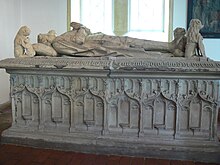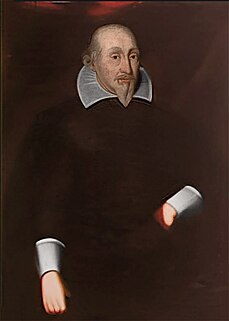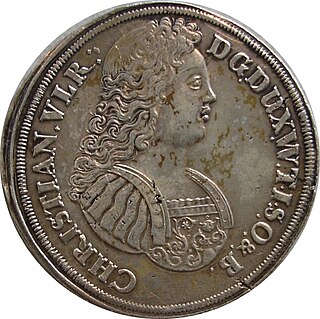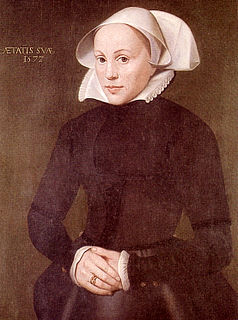| Sibet Attena | |
|---|---|
Sarcophagus of Sibet Attena in the St. Magnus Church in Esens | |
| Born | c. 1425 |
| Died | 8 November 1473 |
| Buried | St. Magnus Church in Esens |
| Noble family | Dornum |
| Spouse(s) | Onna Stedesdorf Margaret of Westerwolde |
| Father | Sibet of Dornum |
| Mother | Frouwa of Manslagt |
Sibet Attena (also: Latin : Sibo; c. 1425– 8 November 1473) was an East Frisian chieftain. He was a son of Sibet of Dornum ("old Sibet") (d. 1433) and Frouwa of Manslagt, a daughter of Enno Cirksena.

East Frisia or Eastern Friesland is a coastal region in the northwest of the German federal state of Lower Saxony. It is the middle section of Frisia between West Frisia in the Netherlands and North Frisia in Schleswig-Holstein.
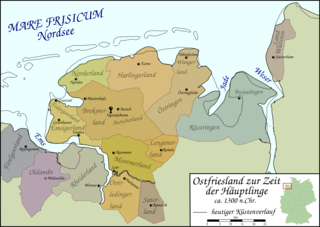
The East Frisian chieftains assumed positions of power in East Frisia during the course of the 14th century, after the force of the old, egalitarian constitution from the time of Frisian Freedom had markedly waned.
Enno Edzardisna was a chieftain of Norden, Greetsiel, Berum and Pilsum in East Frisia. He was the son of the chieftain Edzard II of Appingen-Greetsiel and his wife Doda tom Brok. Enno was a pioneer of the claim of the house Cirksena to the rule over all of East Frisia, which his son finally Ulrich I formally achieved when he was made an Imperial Count in 1464.
From his father he inherited the Beninga Castle in Dornum. From his first wife, Onna of Stedesdorf, a daughter of Hero Omken the Elder, he inherited Stedesdorf in 1447. As a nephew and a loyal supporter of Ulrich Cirksena, he was invested with Esens in 1454. He was also to inherit Manslagt via his mother, but he renounced this.

Dornum is a village and a municipality in the East Frisian district of Aurich, in Lower Saxony, Germany. It is situated near the North Sea coast, approx. 15 km east of Norden, and 20 km north of Aurich.

Stedesdorf is a municipality in the district of Wittmund, in Lower Saxony, Germany.

Ulrich I of East Frisia, first count of East Frisia, was a son of the chieftain Enno Edzardisna of Norden and Greetsiel, and Gela of Manslagt.
Also in 1454, he supported Ulrich Cirksena against Tanne Kankena in Wittmund. He occupied Kankena's castle in Wittmund and expelled him. Seven years later he invested Kankena with Dornum. From 1455, he called himself "Chieftain at Esens, Stedesdorf and Wittmund". Thus, he viewed himself as the ruler of the Harlingerland.
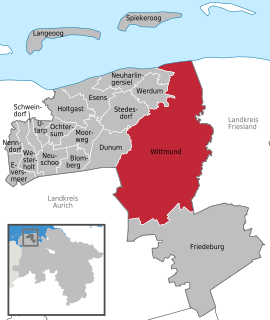
Wittmund is a town and capital of the district of Wittmund, in Lower Saxony, Germany.

The Harlingerland is a strip of land on the North Sea coast of East Frisia. While today the whole of the district of Wittmund is usually described as Harlingerland, historically it specifically refers to the northern part of the present district, which formed the old Frisian state of this name, in particular, the regions around Esens and Wittmund. The region around Friedeburg still belonged at that time to the Frisian state of Östringen.
After Onna of Stedesdorf died in 1464, he married his second wife Margaret of Westerwolde.
Sibet was present in 1464 at the solemn ceremony in the Guesthouse Church in Emden where Ulrich Cirksena was raised to Imperial Count and was knighted during that ceremony.
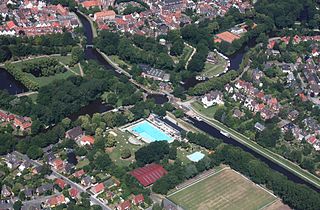
Emden is an independent city and seaport in Lower Saxony in the northwest of Germany, on the river Ems. It is the main city of the region of East Frisia and, in 2011, had a total population of 51,528.

Imperial Count was a title in the Holy Roman Empire. In the medieval era, it was used exclusively to designate the holder of an imperial county, that is, a fief held directly (immediately) from the emperor, rather than from a prince who was a vassal of the emperor or of another sovereign, such as a duke or prince-elector. These imperial counts sat on one of the four "benches" of Counts, whereat each exercised a fractional vote in the Imperial Diet until 1806.

A knight is a man granted an honorary title of knighthood by a monarch, bishop or other political or religious leader for service to the monarch or a Christian church, especially in a military capacity. Historically, in all Europe, knighthood was conferred upon mounted warriors. During the High Middle Ages, knighthood was considered a class of lower nobility. By the Late Middle Ages, the rank had become associated with the ideals of chivalry, a code of conduct for the perfect courtly Christian warrior. Often, a knight was a vassal who served as an elite fighter, a bodyguard or a mercenary for a lord, with payment in the form of land holdings. The lords trusted the knights, who were skilled in battle on horseback.
After his death, a magnificent sandstone sarcophagus was erected for him in the church of Esens (now the St. Magnus Church) in 1473.

Esens is a municipality in the district of Wittmund, in Lower Saxony, Germany. It is situated near the North Sea coast, approx. 14 km northwest of Wittmund, and 20 km northeast of Aurich.
